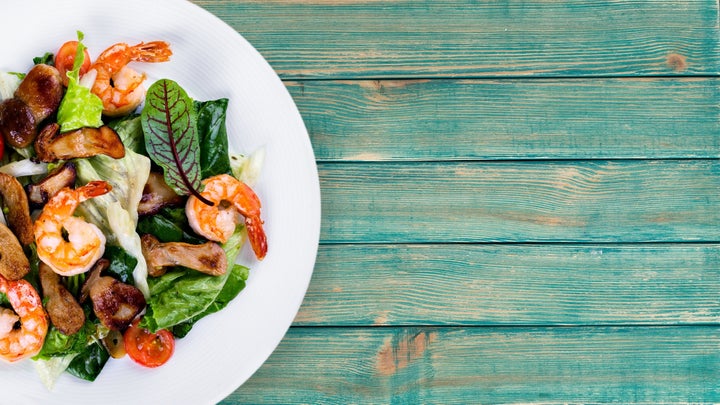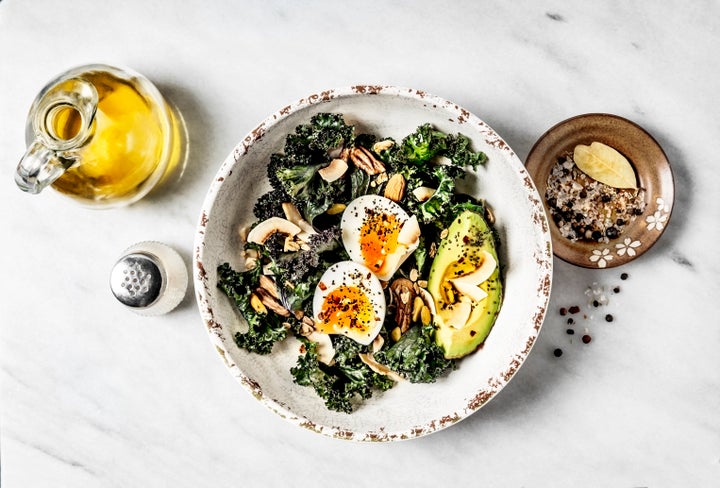The Mediterranean diet has been linked to everything from improved heart health to a lower risk of depression. It’s even been linked to a longer life.
Now, new research suggests eating a Mediterranean diet that’s rich in fish, vegetables and olive oil may protect the brain from protein build up and shrinkage that can lead to Alzheimer’s disease, new research suggests.
Study author Tommaso Ballarini, of the German Centre for Neurodegenerative Diseases in Bonn, Germany, said: “Our study suggests eating a diet that’s high in unsaturated fats, fish, fruits and vegetables, and low in dairy and red meat may actually protect your brain from the protein build-up that can lead to memory loss and dementia.
“These results add to the body of evidence that show what you eat may influence your memory skills later on.”

The diet was named the best diet for 2020 (for the third time running) by US News & World Report – and is actually pretty similar to the UK government’s healthy eating advice, which stars in the Eatwell Guide.
So how does this type of diet play out in day-to-day life? And what would you eat for breakfast, lunch and dinner if you were trying to eat more Mediterranean-inspired cuisine? We asked specialist paediatric dietitian, Bahee Van de Bor, for her recommendations.
“The Mediterranean diet will typically feature more seafood, particularly both oily and white fish, small amounts of red meat, beans, pulses and lentils prepared into soups or falafels,” says a British Dietetic Association spokesperson. Olive oils, rapeseed or sunflower oils are used in cooking instead of butter and nuts, she explains, while seeds and fruit can be used for breakfast or as snacks.
“Onions, leeks, tomatoes and garlic are used to prepare soups or casseroles and are particularly friendly for the good bacteria in our gut,” she adds. “Aim to eat at least two portions of fruit and vegetables per day.”

What’s for breakfast?
Aside from fruit and nuts, as Van de Bor mentioned, you could try a Mediterranean-inspired breakfast dish consisting of eggs prepared with vegetables like onions, tomatoes, red bell peppers and garlic (shakshuka).
Or you could go for a Middle Eastern-inspired platter filled with falafels and dips (hummus/baba ghanoush) and vegetables like cucumber, olives and wholemeal/wholegrain bread or pita.
Alternatively, a spinach and feta breakfast sandwich might do the trick.
How about lunch?
If you’re after something hearty and warming, try a bean soup – mixed beans prepared in a tomato sauce and served with wholemeal bread. Alternatively, a salad with oily fish could work. Think sardines, mackerel or salmon served on a bed of cucumber, olives, salad leaves, with a side of wholemeal toast and drizzled with olive oil.
And lastly, dinner.
Why not try a baked fish dish (white or oily fish) cooked in olive or vegetable oils, with a side of potatoes and vegetables, suggests Van de Bor. Alternatively, you could prep a Moroccan tagine with chickpeas, tomatoes, aubergines and other vegetables served with rice or couscous.
Other options to try include seafood paella with vegetables (frozen or fresh); grilled marinated chicken served with a yoghurt dip, seasonal vegetables and polenta or flat breads; and Italian roasted vegetables served with pasta.
